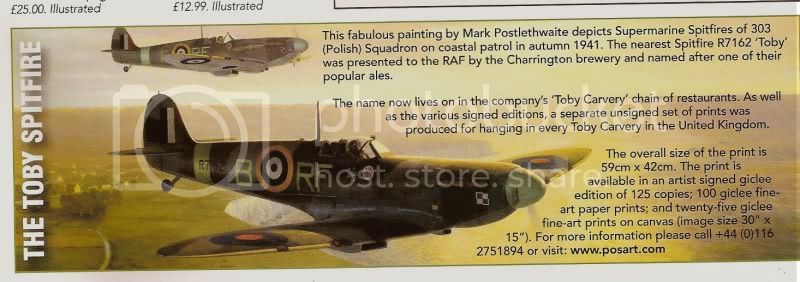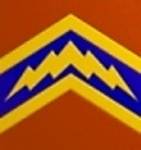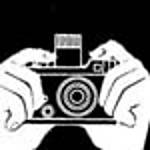
In September 2006 a friend asked me if I knew anything about this Spitfire. My research revealed two things wrong with this picture.
First the location. Liverpool Docks or the Wirral would be more appropriate. I am sure the brewery’s marketing department were anticipating an illustrious history for the aircraft but the truth is that during its one month’s sojourn with the Poles Toby was based solely at Speke. No white cliffs in that part of the world. By this time a Mk I like Toby would no longer be considered good enough for front line duties and so allocated to resting squadrons in a relatively quiet backwater. Unfortunately, the “Gifts of War” book from Air Britain gives a misleading account of its history while with the Polish Air Force.
According to the authors, Toby was assigned to 303 Squadron on 12th September 1941 from 31 MU. On 6th October it transferred to 306 (Polish) Squadron because 303 Squadron converted to Hurricanes and on 15th October it transferred to 61 OUT because 306 Squadron were reequipping with Spitfire Mk Vs. They also say that this all happened in the Polish Wing at Northolt. As they say in my part of the World. “It’s backuds way abart.” The following is what actually happened.
On 31st July 1941 303 Squadron moved to Speke for respite, leaving behind their Spitfires at Northolt. At the same time 315 Squadron left Speke to replace 303 Squadron at Northolt. They also left their Hurricanes behind at Speke. At Speke 303 Squadron commenced operations with 315 Squadron’s old Hurricane Is on the 21st July (routine patrols and convoy protection). The last Hurricane sortie was on 24th August. Two days later they commenced operations with Spitfire Is, the last taking place on the 1st October.
Meanwhile, back at Northolt all the squadrons of the Polish Wing (306, 308, and 315) began converting to Spitfire Mk VBs in early September.
On the 6th October 303 Squadron returned to Northolt, swapping places with 306 Squadron who were due for a rest. Once again the squadrons left their aircraft behind when they moved. At Speke 306 squadron adopted 303 Squadron’s Spitfire Is and at Northolt 303 Squadron were given Spitfire VBs.
306 Squadron’s rest period came to an end on 12th December 1941 when they replaced 316 Squadron at Church Stanton, 316 Squadron moving to Northolt. On leaving Speke 306 Squadron handed over its Spitfire Is to Woodvale where they were passed on to 308 Squadron. At Church Stanton 306 Squadron received Spitfire VBs.
Obviously, as Toby joined 303 Squadron on 12h September 1941, it was one of the Spitfire Is that replaced the old 315 Squadron Hurricanes at Speke. It was transferred to 306 Squadron when they swapped bases with 303 Squadron but why it was transferred to 61 OTU on 15th October I do not know. It could not have been because 306 Squadron were reequipping with Spitfire VBs as that did not happen for another two months and at another location.
The second fault is that the artist has depicted Toby with large chessboards. It was not until early 1942 that 303 Squadron adopted chessboards. 303 did not have chessboards on their Spitfire Is and IIs, only their squadron badge. There are some photographs of 303 Squadron Hurricanes with chessboards but those were transfers from another Polish squadron.
The artist told me he was new all of this but “this was the way the marketing department wanted it painted”. At the time, September 2006, the brewery’s website even claimed that they donated Toby to 303 Squadron even though they must know that on 22nd June 1941 it was first allocated to 411 Squadron RCAF.









































